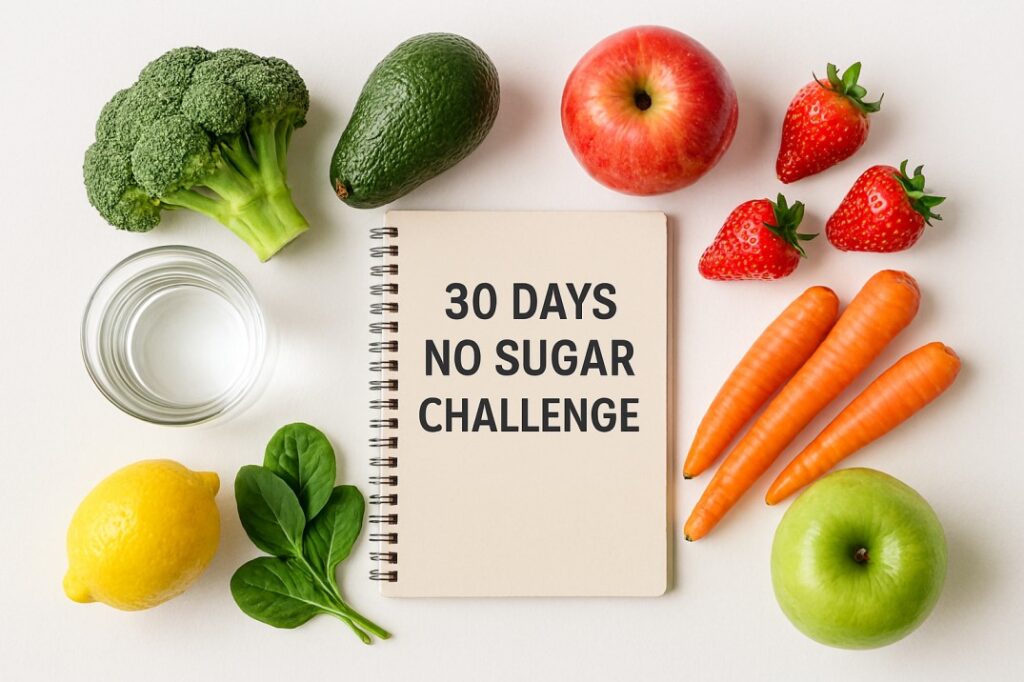
stop eating sugar for 30 days health challenge concept
Discover what happens when you stop eating sugar for 30 days — benefits, withdrawal, skin, blood sugar, and practical tips to succeed.
Stop Eating Sugar for 30 Days: See Results in Weeks
Giving up added sugar for 30 days is a popular challenge. People try it to lose weight, feel better, or test their cravings. In this guide, I’ll explain what usually happens. I’ll use simple language. I’ll also add practical tips and an FAQ.
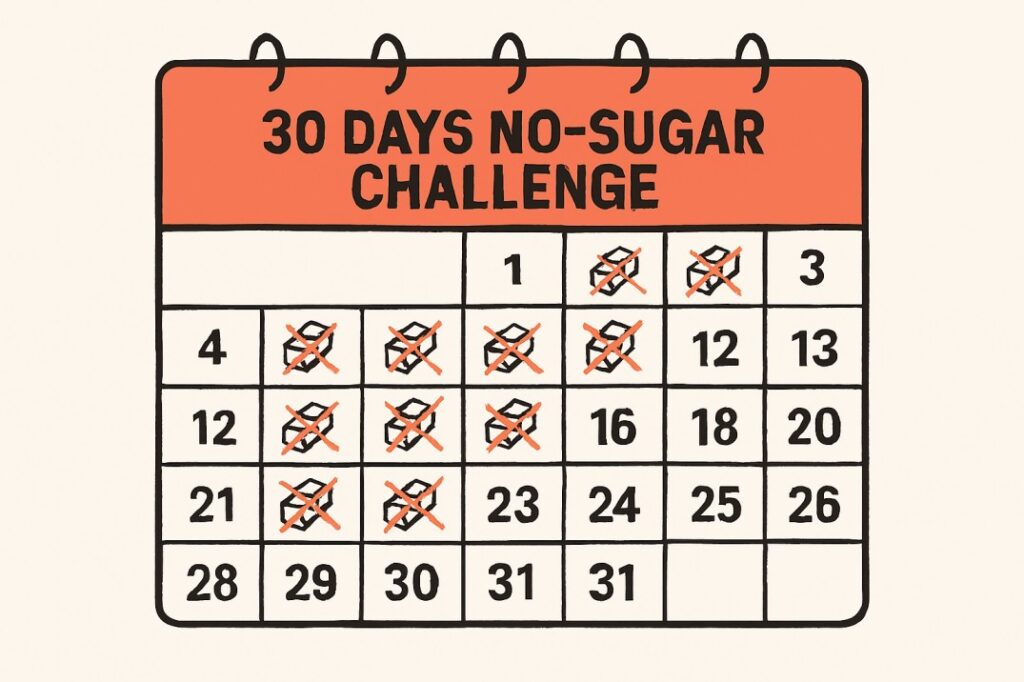
What does “stop eating sugar for 30 days” mean?
First, a quick definition. It usually means avoiding added sugars: table sugar, syrups, candy, sodas, many packaged foods, and sweetened drinks. It does not usually mean avoiding naturally occurring sugars in whole fruit or milk. Labels matter. Read them. The U.S. and U.K. health agencies recommend limiting added sugars. CDC, nhs.uk
Stop Eating Sugar for 30 Days: week-by-week (what to expect)
Week 1: withdrawal and early changes
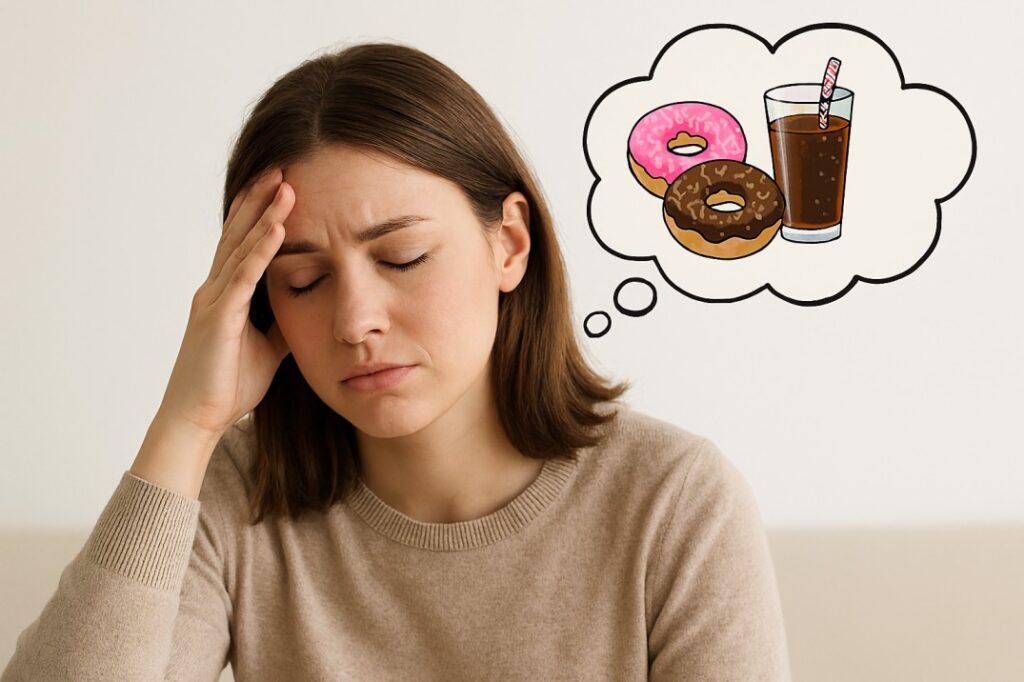
At first, you may crave sweets. You might feel tired. You might get headaches. These are common. They happen because your brain and body adjust to fewer quick sugar hits. For most people, the worst part is the first 3–7 days. Stay hydrated and eat regular protein and fiber. This eases symptoms. Healthline Medical News Today
Week 2: more stable energy, fewer crashes
By the second week, many people notice fewer energy spikes and crashes. Mood often evens out. Sleep may begin to improve. Also, hunger becomes more predictable if you eat balanced meals. These shifts come from steadier blood sugar and fewer high-glycemic snacks. Healthline
Week 3: visible improvements (skin, cravings)

Around week three, some people see clearer skin and fewer sugar cravings. Sugar can promote inflammation in some people, so cutting it may calm redness and puffiness. However, changes vary. Not everyone sees immediate skin benefits. Spire Healthcare, EatingWell
Week 4: habits form and measurable gains
By day 30, you may have lost weight or inches. You may feel more in control of your diet. Blood sugar control improves in those who had a high intake before. Importantly, the month often resets habits. After 30 days, many people find sweet foods less appealing. Healthline
How stop eating sugar for 30 days affect weight
Cutting added sugars typically reduces calories. Therefore, many people lose weight. But weight loss is not guaranteed. It depends on what you replace sugar with. If you swap sugary drinks for high-calorie treats, you might not lose weight. To succeed, replace sugar with whole foods, protein, and fiber. Healthline
How stop eating sugar for 30 days affects blood sugar & insulin
Cutting added sugar lowers quick blood-glucose spikes. This helps insulin work better. Over time, this reduces insulin resistance in many people. For people with prediabetes or type 2 diabetes, lowering added sugar is especially helpful. Still, track medical advice if you take diabetes medication — your doses may need to change. CDC, PMC
Energy, mood, and brain fog
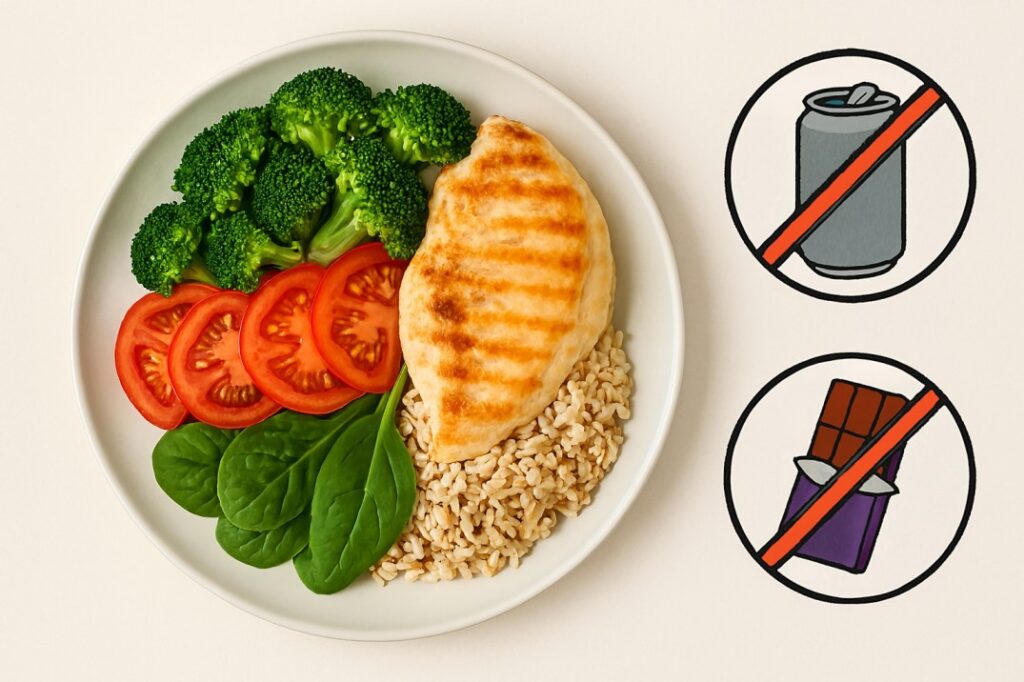
Initially, you may feel foggy or tired. Shortly after, energy stabilizes. Mood swings linked to sugar highs and crashes usually calm down. Some research suggests that high sugar diets can affect memory and mood over the long term, so reducing sugar can help mental clarity. PMC, Verywell Health
Skin, inflammation, and oral health
Many readers report clearer skin after cutting sugar. Clinically, excess sugar can increase inflammation and glycation — processes that affect skin health. Also, less sugar means fewer cavities and better oral health. Still, skin results vary by person. Spire Healthcare, nhs.uk
Digestion and the gut
Cutting processed, sugary foods often increases fiber and whole foods intake. That change helps gut health. Yet initial changes in gut bacteria can cause bloating or gas for a short time. These usually settle as the gut adapts. Healthline
Common side effects and how long they last
Expect short-term withdrawal symptoms:
- Headaches.
- Fatigue.
- Irritability.
- Cravings.
- Trouble concentrating.
Most strong physical symptoms fade in a week. Psychological cravings can linger for weeks. Plan for this so you don’t give up when cravings come. Medical News Today, Verywell Health
Practical tips to succeed on a 30-day no-sugar plan
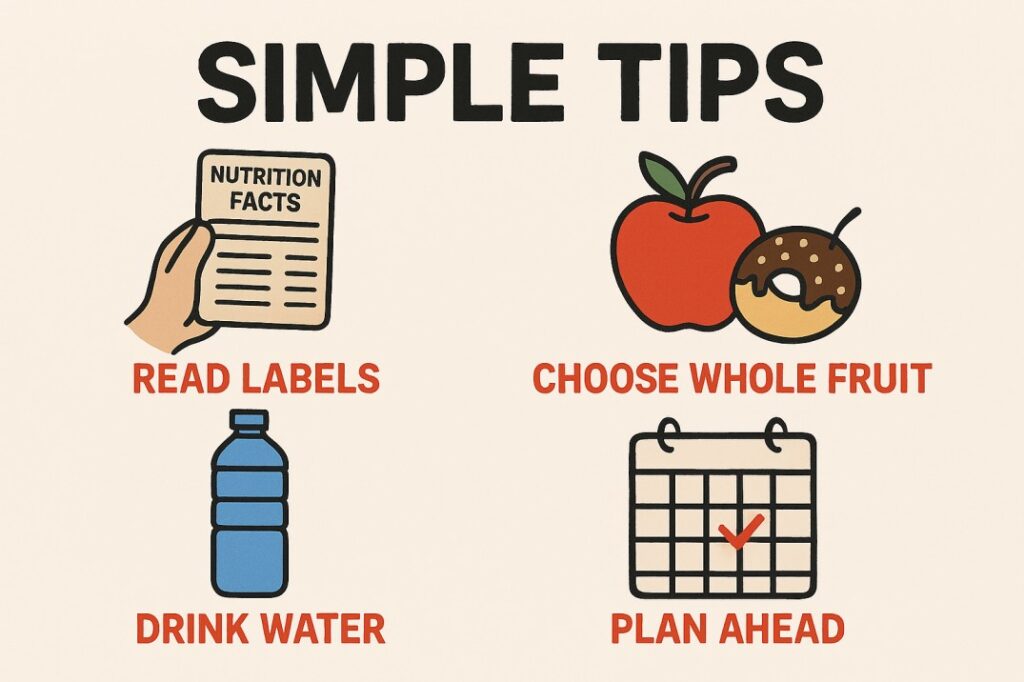
- Read labels. Look for added sugar names (sucrose, corn syrup, maltose). U.S. Food and Drug Administration
- Cut sugary drinks first. They’re the fastest source of added sugar. Replace with water or unsweetened tea. Health
- Eat protein and fiber at each meal. They slow sugar absorption and reduce cravings.
- Use whole fruit when you need sweetness. Fruit gives fiber and nutrients.
- Plan for social events. Bring a sugar-free snack.
- Be patient. Cravings fade. Habit replaces habit.
What to avoid and what to allow
Avoid: candy, sodas, pastries, sweetened yogurts, many sauces and condiments.
Allow: whole fruit, plain dairy (or unsweetened dairy alternatives), whole grains, lean protein, and vegetables. If you’re reducing intake for health reasons, check with a clinician first. U.S. Food and Drug Administration
Success stories vs. scientific caution
Many people report big wins in 30 days: weight loss, clearer skin, fewer cravings. However, the strongest scientific support is for long-term reduced added sugar intake, lowering the risk of obesity, tooth decay, and metabolic disease. A 30-day reset helps build habits, but long-term change matters most. PMC, Healthline
FAQ
Q: Will I lose a lot of weight in 30 days?
A: You may lose modest weight if you cut calories. But results vary. What you eat instead matters. Healthline
Q: Can I eat fruit?
A: Yes. Whole fruit contains fiber and nutrients. It’s different from added sugar. U.S. Food and Drug Administration
Q: Are artificial sweeteners allowed?
A: They don’t count as added sugar, but they can affect cravings for sweet tastes. Use with caution. Healthline
Q: I have diabetes — can I try this?
A: Talk to your doctor first. Reducing sugar can change blood glucose and may require medication dose adjustments. CDC
Q: What if I “cheat” once?
A: One slip won’t ruin progress. Learn from it and continue. Habits form over weeks, not hours.
This article is for general information only. It is not medical advice. Consult your healthcare provider before making major diet changes, especially if you have a medical condition or take medicines.
Ready to try it? Start with one week. Then do 30 days. Track your mood, sleep, skin, and weight. Share your results. If you liked this guide, save it or share it with a friend who wants to try a sugar reset.
If you found these tips helpful, share this article with friends and family. For more science-backed health insights, explore our latest blogs on Nowspress.





